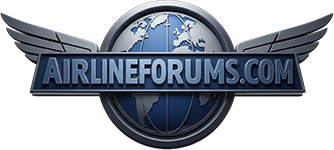[SIZE=13pt]I've done my share of deicing & push-outs when I worked the line, and neither of those jobs required the skills of an A&E Licensed mechanic. In fact, I often wondered how long it would take American to figure that out when they often watched a mechanic sitting on the gate in his Hough tractor reading a newspaper, while everyone else was hustling their butts off to get the aircraft out on time. I always thought it was only a matter of time before they woke up and in managements typical convoluted fashion, they finally did. In any case, the idea that loss of this function caused mass loss of mechanic jobs is ludicrous –we could be reassigned all deicing and I doubt it would produce two dozen jobs on a very infrequent and seasonal basis.[/SIZE]
[SIZE=13pt]As for the B scale issue, you either don't know the facts, or would rather ignore them since AMFA's law firm had a lot to do with its introduction to AA. Here’s an excerpt from an APA letter you might find informative.[/SIZE]
“American Airlines adopted the benchmark B-scale in 1983, permanently reducing pay for newly hired pilots by 50 percent. In fact, under the AA system—negotiated while the Seham firm sat on the labor side of the table—pay rates and pensions for new employees would never merge with those of then-current employees.
Martin Seham wrote proudly of this accomplishment in Cleared for Takeoff: Airline Labor Relations Since Deregulation.
As general counsel to the Allied Pilots Association (APA), the independent certified representative of the American Airlines pilots, I was close to the negotiations that resulted, in 1983, in the earliest realization of the two-tier system. APA was not faced with an insolvent or failing carrier; it was, however, forced to deal with an economic environment that had changed dramatically because of the effects of deregulation and was, by virtue of its independence, mandated to reach an agreement consistent with the needs and objectives of its constituency. — Martin C. Seham
Although B-scales were not a new concept, their initial format was unique to the airline industry. Following American’s lead, other airlines began to demand similar packages—forcing the entire airline labor movement into a new era of concessions. Good for management; bad for pilots, flight attendants, mechanics, and all of the airline industry’s workers.
While ALPA pilots were forced to deal with this blight brought to the industry by APA and the Sehams, not one ALPA pilot group accepted a non-merging two-tier scale. The clearest example of this was the ALPA strike at United in June 1985, when the pilots refused to agree to a non-merging two-tier pay scale”.
[SIZE=13pt]As for the TWU, here’s an editorial regarding their 1983 ratification process:[/SIZE]
[SIZE=19pt]UNION OKS AMERICAN AIRLINES PACT[/SIZE]
[SIZE=19pt] Author: United Press International[/SIZE]
Transportation Workers Union officials said yesterday that union members have *ratified a new contract with American Airlines, averting a strike that had been scheduled for 12:01 a.m. today.
TWU leaders had recommended that the contract be rejected.
The airline set the strike deadline on the pact after the union backed out of a strike three weeks ago and submitted the contract to the membership.
American had said it would use nonunion personnel to run the airline if the TWU's 10,000 ground workers struck. It also said if the contract was not ratified, it would begin laying off TWU workers.
The airline 's offer includes 21 percent pay raises over the three-year life of the contract; a clause the airline calls a "lifetime" job guarantee, and incentives for early retirement at age 55.
But it also grants the airline the right to ask TWU employees to do work not covered in their job descriptions; establishes a separate wage structure for new employees up to 27 percent below union scale, and allows the airline to contract for building maintenance work outside the union.
It was these clauses that prompted TWU officials to recommend that the contract be rejected.
* the contract passed with a +75% Yes Vote
[SIZE=13pt]Your concern about Building Cleaners though really warms my heart. It's the first time I've ever heard an AMFA supporter express concern about anyone but himself, and never about a Building Cleaner! What is the world coming too?[/SIZE]
[SIZE=13pt]I'll have to get back to you on the OSM's since it will require some research on my part, but were you working in Tulsa at the time? The reason I ask is if you were, you may have some information that came out at Local 514's contract ratification meeting that might help explain their attitude about this issue since it was primarily an Overhaul matter. But, for all the complaining about that development, what happened elsewhere was worse. At Alaska, all heavy overhaul was wiped out and at NWA, even before the strike, the majority of heavy checks were outsourced. After the strike, of course, all of it was outsourced [/SIZE]
[SIZE=13pt]Also, since you didn't mention what was going on at the other major carriers during this period, these bankruptcies occurred and they obviously had an impact since negotiations don’t occur in a vacuum:[/SIZE]
Braniff - May 1982, Continental - Sept 1983, Eastern - Mar 1989, Braniff - Sept 1989, Continental - Dec 1990, Pan Am - Jan 1991, Eastern - Jan 1991, America West- Jun 1991, TWA - Jan 1992
